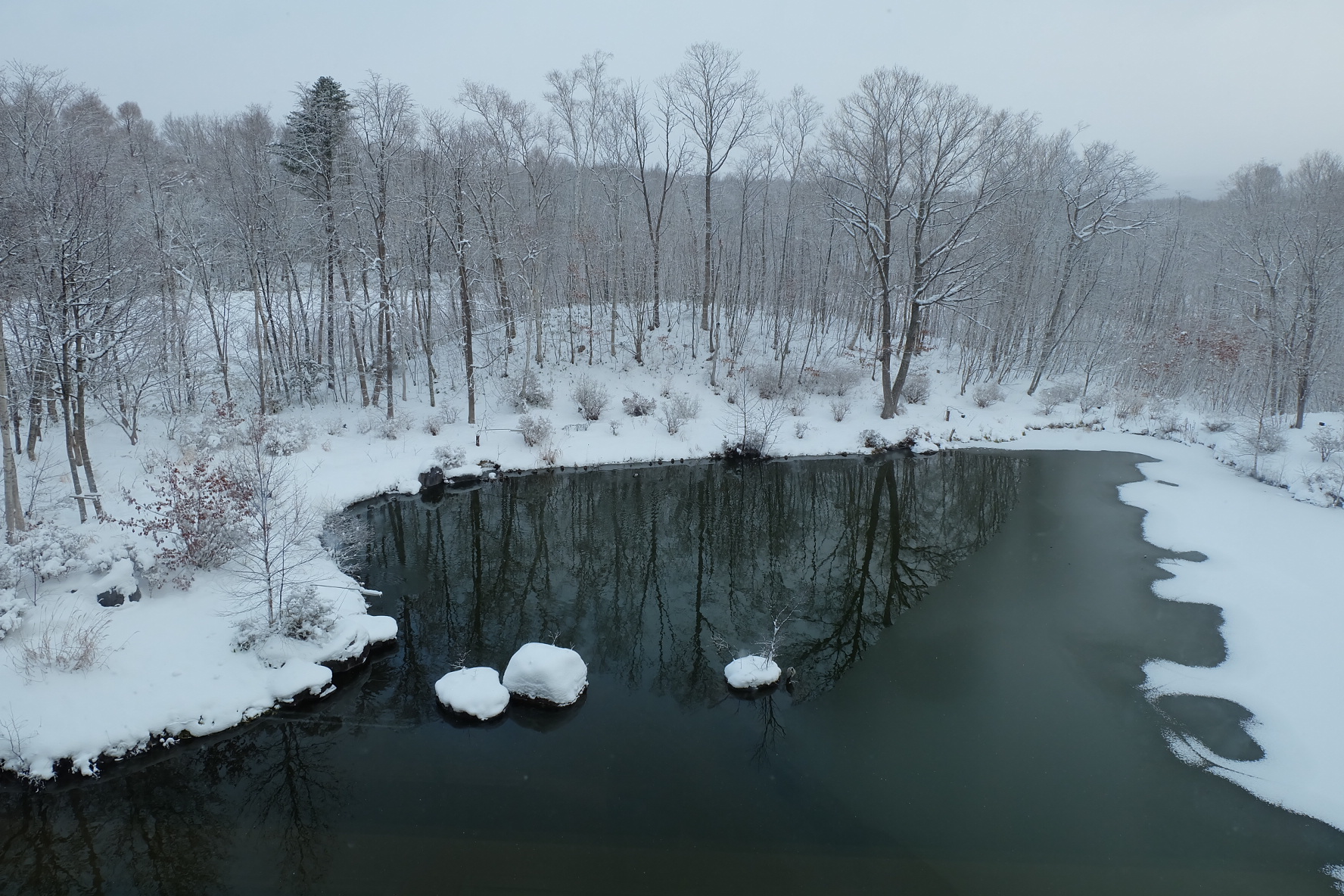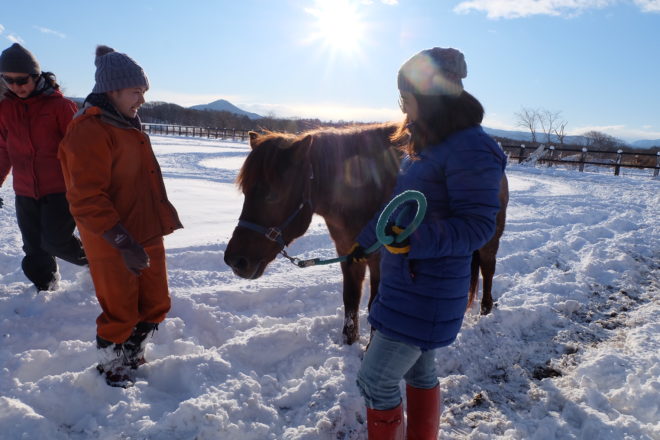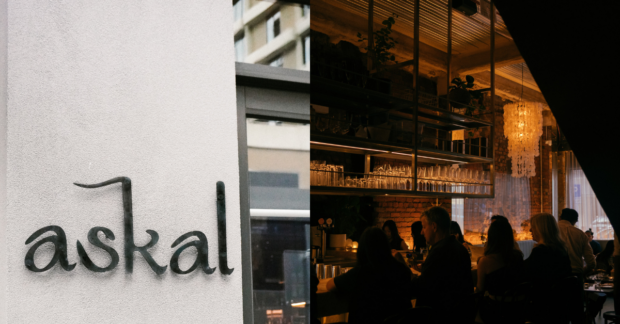A visit to Paard Musée (Higashi Onuma 294-1 Nanae Kameda-gun Hokkaido) is more than just about riding horses. They want to share the ranch lifestyle with visitors by having them experience it—and that includes picking up horse poop at the stables.
We took the job seriously, sweeping and scooping up horse dung before dumping them into a waiting wheelbarrow.
“Done,” we said, when all the poop was gone.
“Okay, now the hay.”
We got to work again, sweeping up the hay before fetching water in silver buckets and unrolling fresh hay to make sure the horses had something to drink and eat.
“How do you bond with a horse?” Noriko asked.
“You feed it!” we said, thinking about how our dog feels closest to us when we have food in my hands.
“What else?” she asked.
“Groom it?”
“What else?”
“Walk it,” Yuki said.
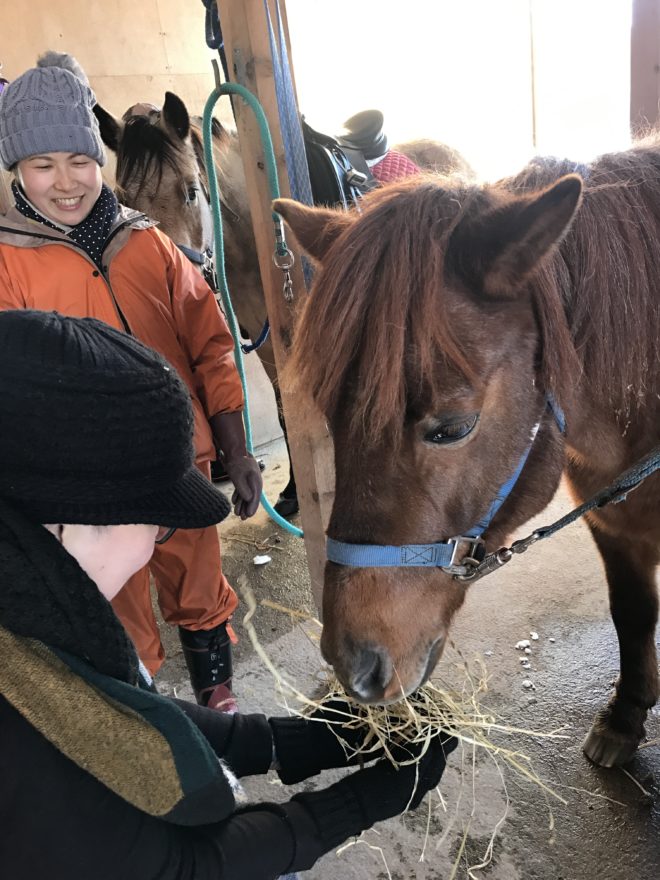
We did all three with Mashu, feeding her with our hands, grooming her until she was so relaxed she looked ready to sleep and then taking her for walks around the gorgeous property. “We do this three times a day,” said Noriko, giving us a glimpse of the hard work that goes into running the ranch.
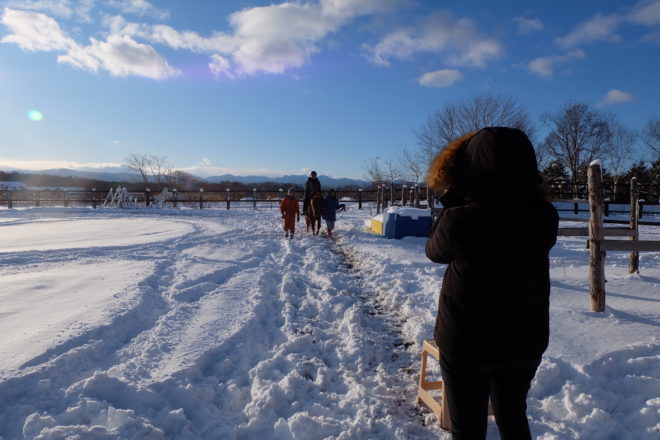
Then, it was time for the ride. I climbed onto Mashu’s back and sat in the saddle as she clip-clopped around the paddock. “This isn’t your first time, is it?” Noriko asked. “You’re very relaxed.”
It wasn’t my first time to ride a horse but it was definitely my first time to ride a horse in snow.
We gave Mashu water to drink and groomed her once again to thank her for our ride.
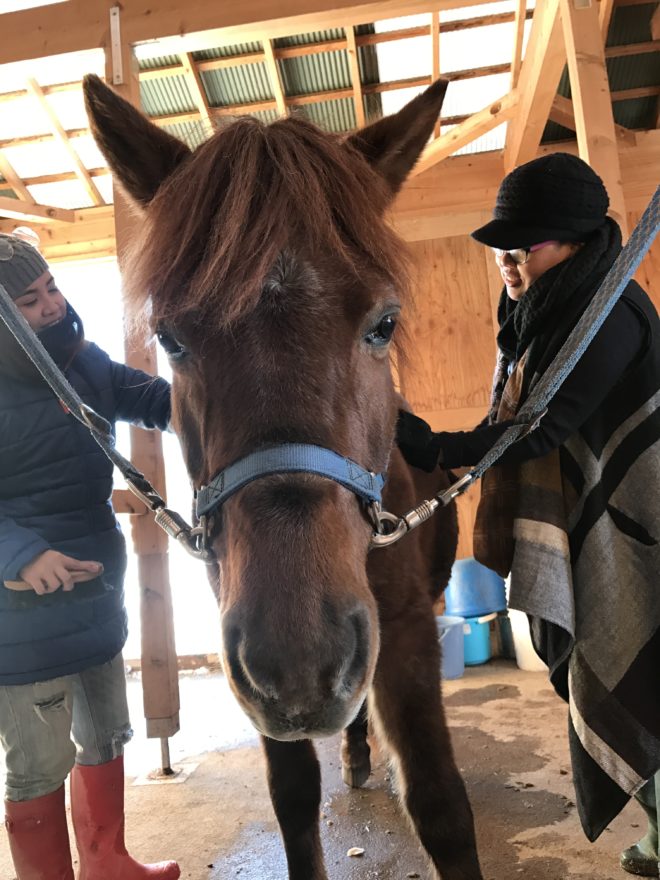
At Paard Musée, you don’t just hop on and leave—it isn’t a carousel. You get to connect and communicate with the horses. And what a joy that is.
We met other animals there, too—adorable dogs, ponies and donkeys plus a grumpy goat and a fat cat.
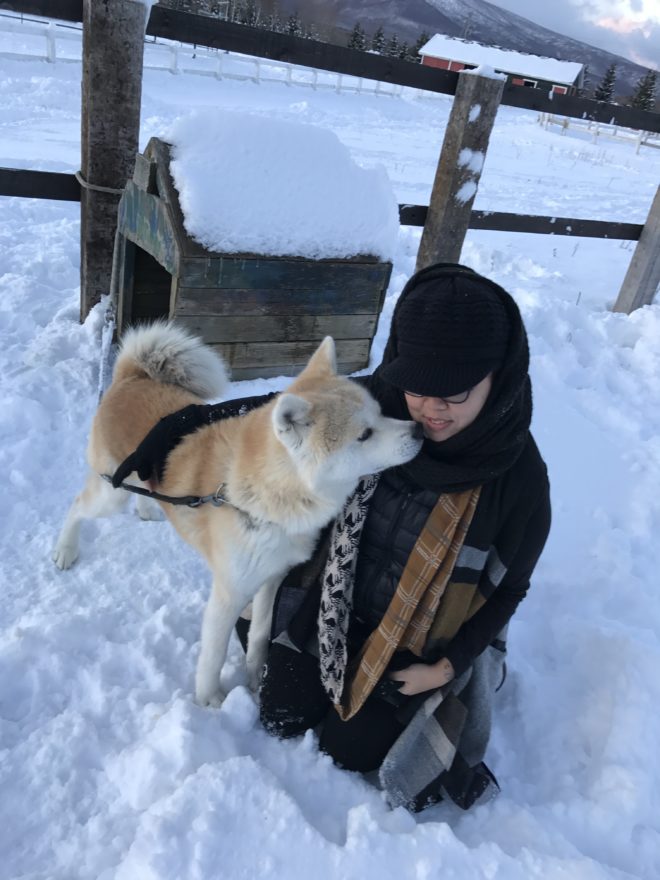
Guests can go to Paard Musée for a few hours or choose to stay overnight at their beautiful log cabin or wooden guesthouse, which is something we’d love to do next time.

Like a movie
“This looks like a movie,” we said, something we would repeat over and over during our trip to Hakodate—really just another way of saying that what was in front of us was so beautiful that it seemed unreal.
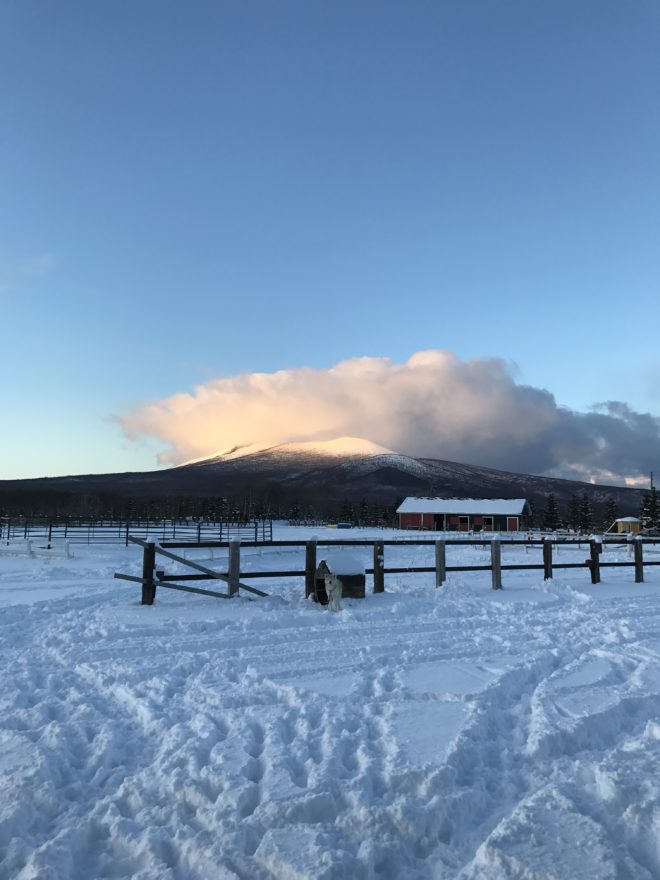
We spent the night at Hakodate Onuma Prince Hotel (041-1355 Hokkaido, Kameda District), having a great multicourse dinner that included foie gras and scallop dishes and the famed Onuma beef. The un-tattooed in our group (sadly, not us) got to enjoy the hotel’s onsen, too.
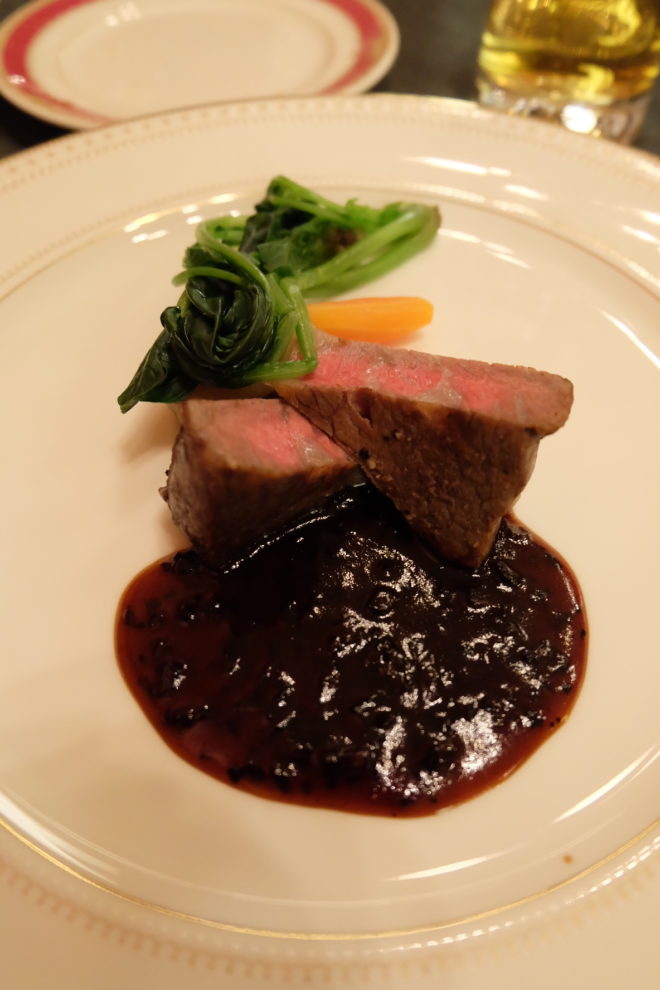
The hotel is a bit secluded but is totally worth the trip even for just one thing: the amazing view.

Our bedroom had a massive window and although we had already seen the view of the snow-covered trees the night before, we were unprepared for how beautiful it was at dawn. It was so beautiful that when we spotted it through our bleary eyes, we didn’t dare close them again. We were transfixed. There was magic outside our window and it took our breath away.
And we’ve read that the changing leaves of fall look amazing through those panes, too.
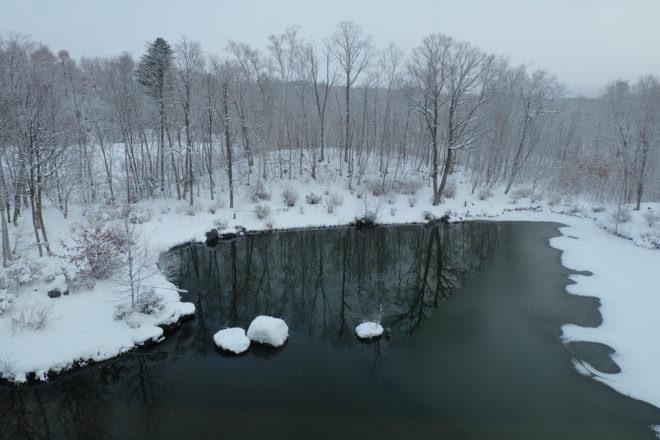
Breakfast at the hotel—a mix of Japanese and Western delights—was a real treat for many reasons: they serve morning beer, pizza, warm and flaky croissants, freshly sliced bacon, they have an onigiri bar and they allow you to make grilled cheese. They served fries, too, which I dipped in Kewpie mayo, my way of continuing the East meets West theme of the trip.
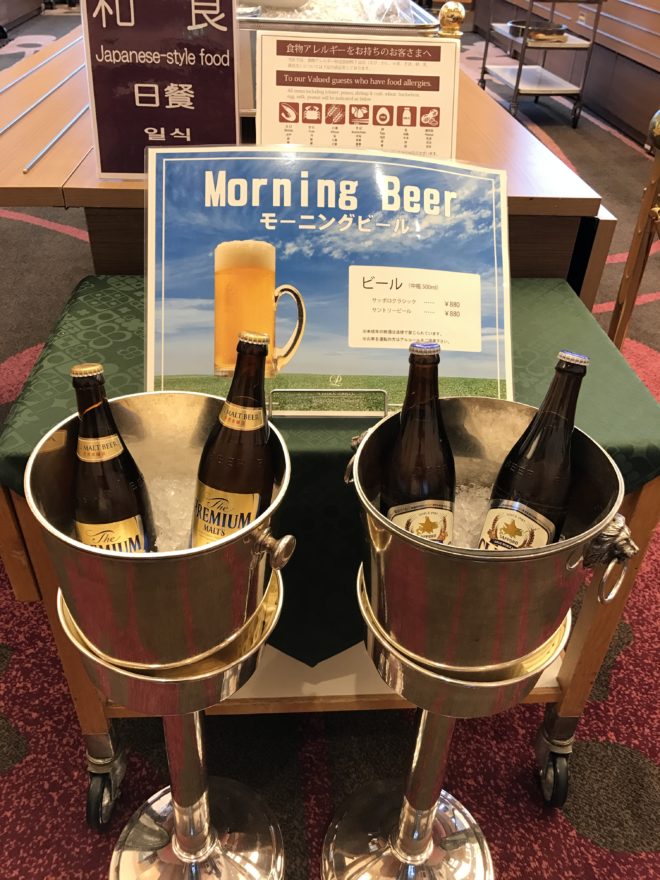
We walked through Onuma Quasi-National Park (1023-1 Onumacho, Nanae, Kameda District Hokkaido), a glorious park surrounded by mountains, lakes and forests, spotting little snowmen along the way. The lake, which had not completely frozen over, will soon be a playground for people seeking to go snowmobiling or ice fishing.
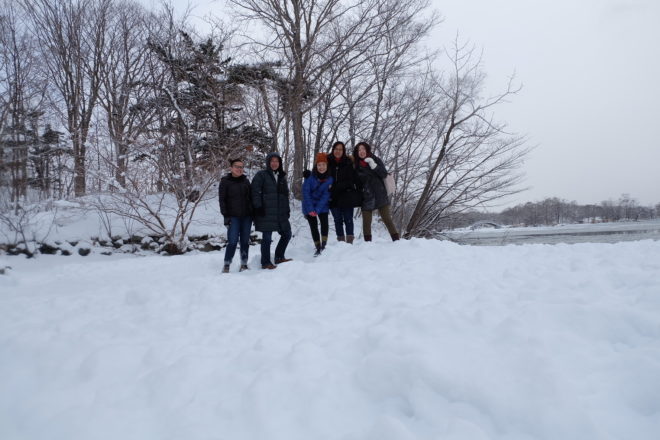
But the park is a playground throughout the year, becoming the venue of different activities depending on the season: canoeing, cycling, watching the cherry blossoms and more.
We stopped by the Trappistine Convent (346 Kamiyunokawa-cho, Hakodate), Japan’s first convent which was established by eight nuns who had come over from France. Built in 1898 and then rebuilt in 1927 after being destroyed by fire in 1925, the place was a picture of tranquility.
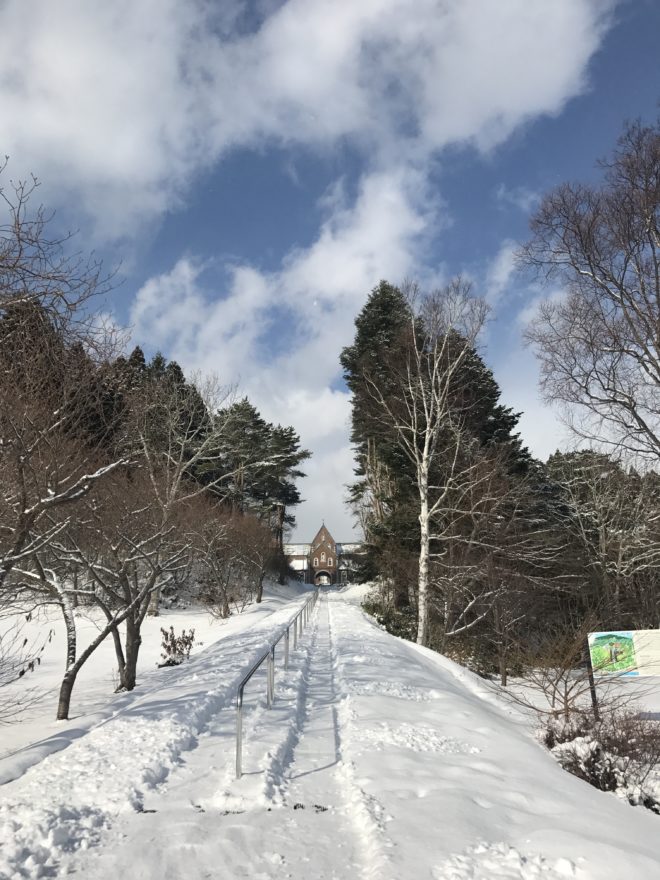
Unlike the convent, at the Trappist Monastery (329 Mitsuishi Hokuto-Shi Hokkaido), we couldn’t roam the grounds. Women aren’t allowed inside Japan’s first male Trappist Monastery. After conquering a little hill (that handrail was a godsend), all we could do was look through the gate at the beautiful snow-covered building and wonder about its inhabitants, monks who are dedicated to a monastic life of prayer and work.
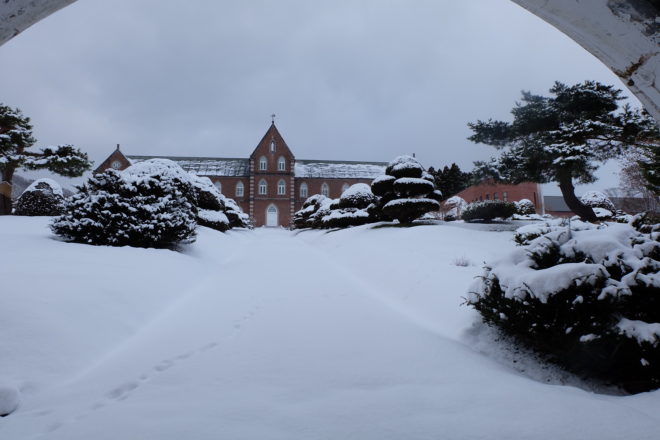
Everyone is welcome at the shops though—at both places, Trappist cookies are available along with other souvenirs.
Toshihiko Inoue of Combrains had a surprise for us if we were willing to go on a 15-minute hike through the snow. “Of course!” we said.
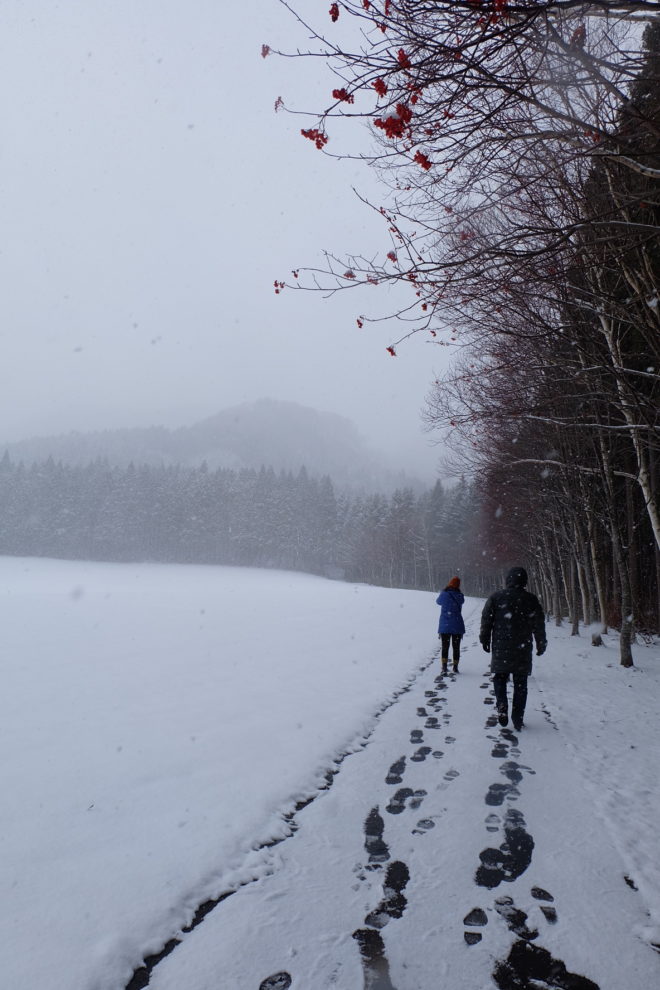
We walked through beautiful wooded areas, stopping to make snow angels, snowflakes falling on our heads, and reached the top to see a shrine of Our Lady of Lourdes, which was built in 1911. It was another movie moment.
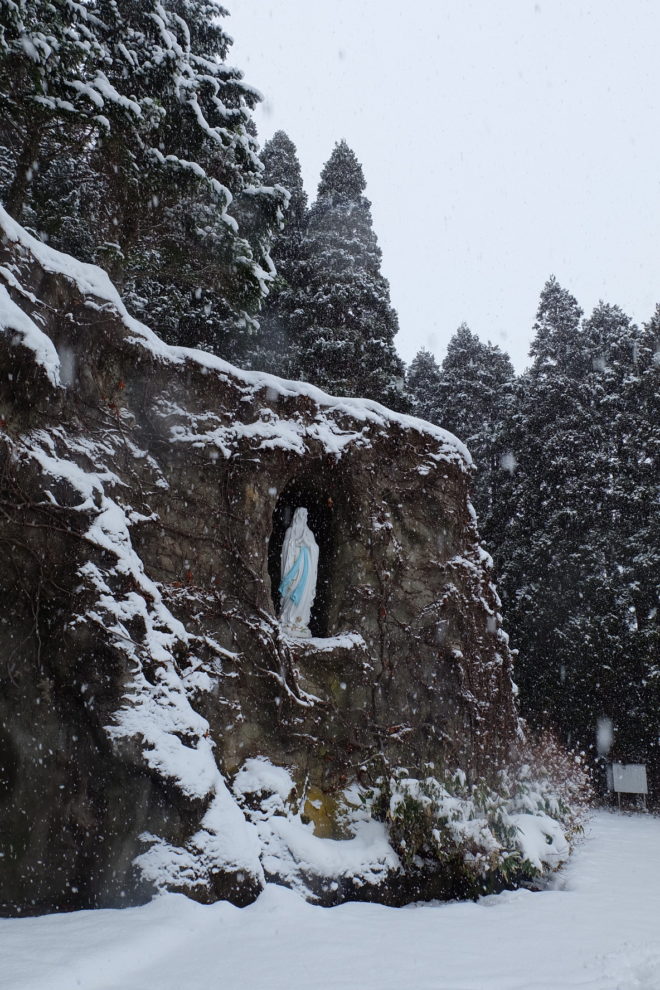
On our way back to the car, Inoue pointed to a series of markings on the snow. “Look! A fox trail!”
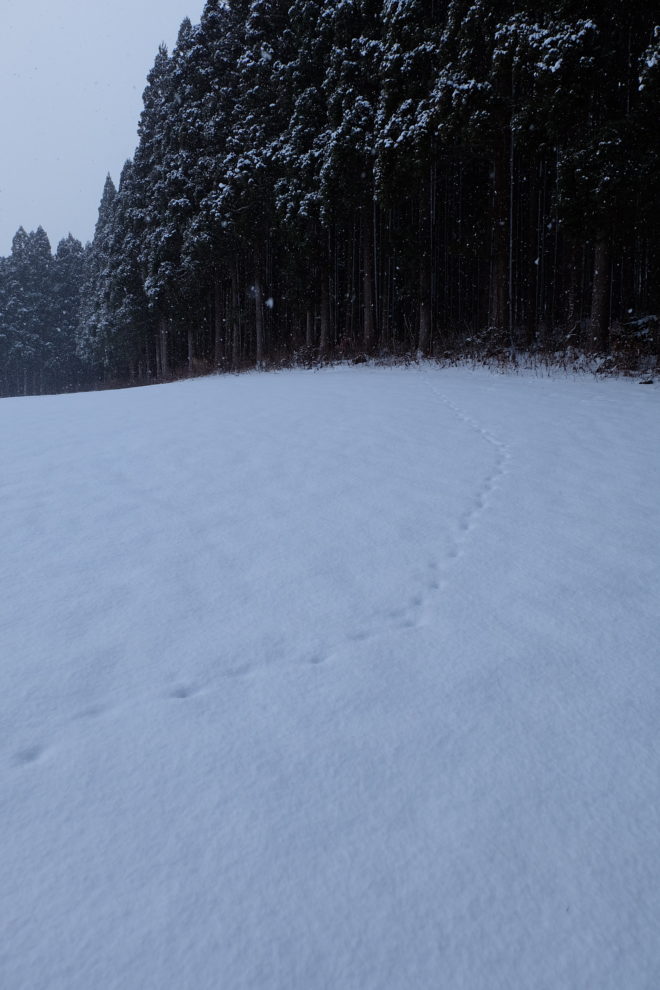
Motomachi
Hakodate is also heaven for people who like traveling to see religious sites. Motomachi, a district at the foot of Mount Hakodate, is fascinating, being the site of churches and temples in such close proximity to one another. In just a few blocks we spotted a Catholic church, a Buddhist temple, a Russian Orthodox church, an Episcopal church, a Shinto temple and more.
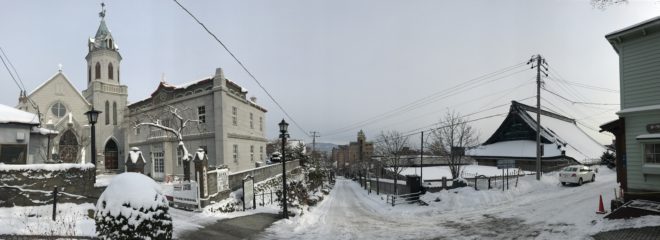
“And they coexist peacefully?” we asked Inoue.
“Yes,” he said, smiling.
“The rest of the world has a lot to learn from Hakodate,” we told him.
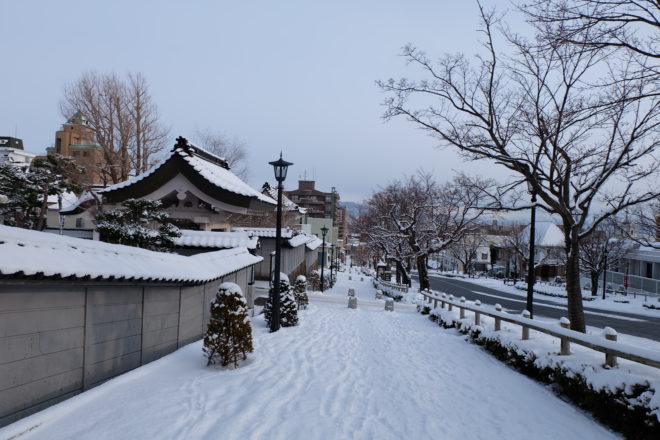
Hiroshi Sakuma welcomed us to Hakodate’s Old Public Hall (11-13 Motomachi, Hakodate, Hokkaido) and showed us around the historic colonial-style house.

The Great Fire of Hakodate had burnt down the previous hall in 1907 and they built the new (old) one in 1909. Of the 58,000-yen donation they gathered, 50,000 came from one man: Teppei Soma. The local businessman’s only stipulation? That the public hall be built on a hill to keep it safe from another fire. The Old Public Hall of Hakodate Ward, which once served as accommodations for visiting royalty and is now used as a concert hall, allows you to travel back in time to the Meiji period by slipping into costumes and having your photos taken there.
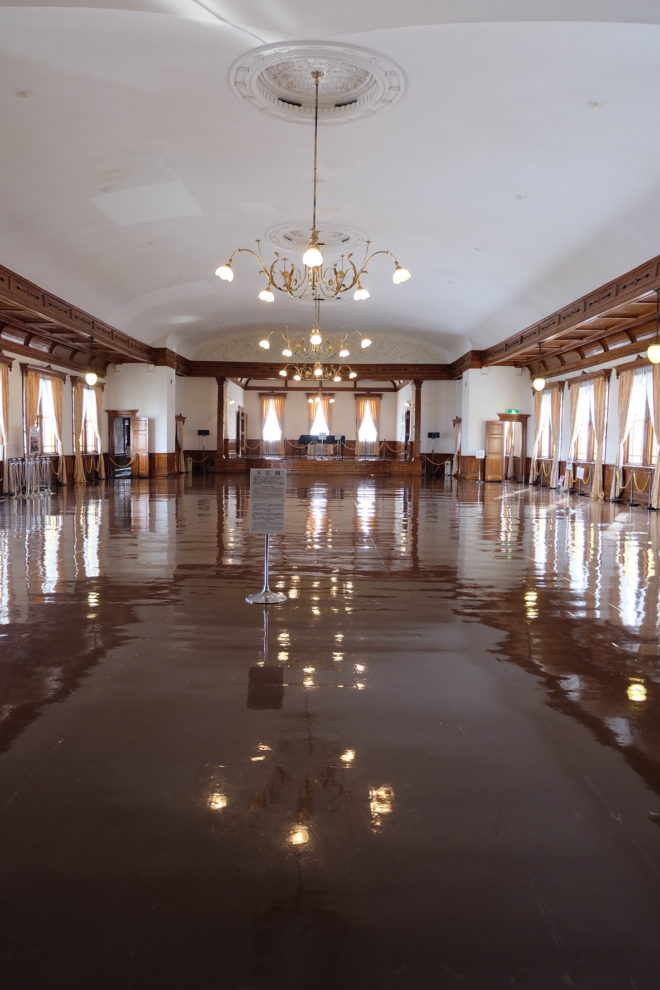
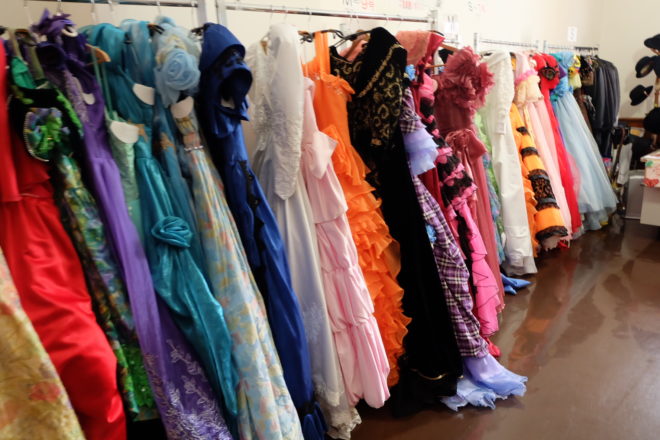
“Many young ladies like this area… it’s romantic,” Inoue said as we continued our walk around Motomachi, stopping by Hachiman Zaka Slope to take pictures and to see a great view of Hakodate Harbor.
We walked down Minatogaoka Street which is also called the Soft Ice Cream Street, which is obviously where we should live given our propensity to try and eat every cone in sight. Sadly, the stores were still closed when we visited.
Ken Satoh, senior staff at the International Tourism Section of the City of Hakodate’s Tourism Department, pointed out the oldest store in Hokkaido, a 900-year-old shop that sells Funadama ginger.
But what stopped us in our tracks was a store claiming to sell “The Second Most Delicious Ice Cream Melon Bread In The World.”
“What? Why second best? So who’s the first?” we wondered out loud.
“His teacher,” Ken answered.
And we were so charmed that we wished that the self-deprecating store was already open so we can give it our money.

Instead, we spent our money at the massive multilevel Muji that had us wishing our house looked like that store, on Royce (it’s a Hokkaido-born brand) and at the Filipino favorite Don Quijote.
Great heights
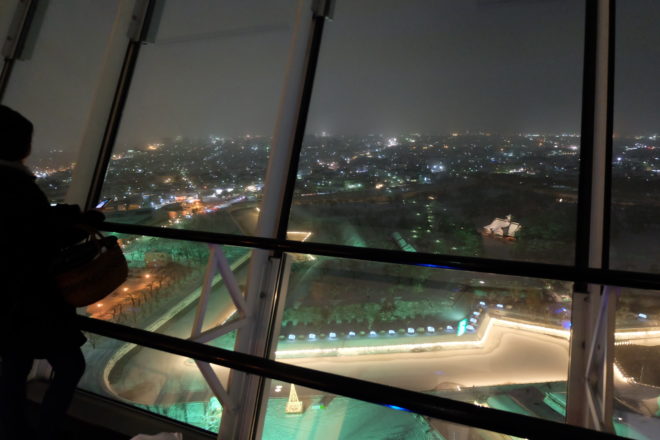
On the last night of our trip, we headed up Goryokaku Tower (43-9 Goryokakucho, Hakodate), a must-see for visitors to Hakodate. The tower’s observatory offers a bird’s eye view of the historic star-shaped Goryokaku Fort, built in 1853, the fortress of the Republic of Ezo and where the Boshin War took place. An exhibit at the tower allows you to walk through the fort’s rich past.
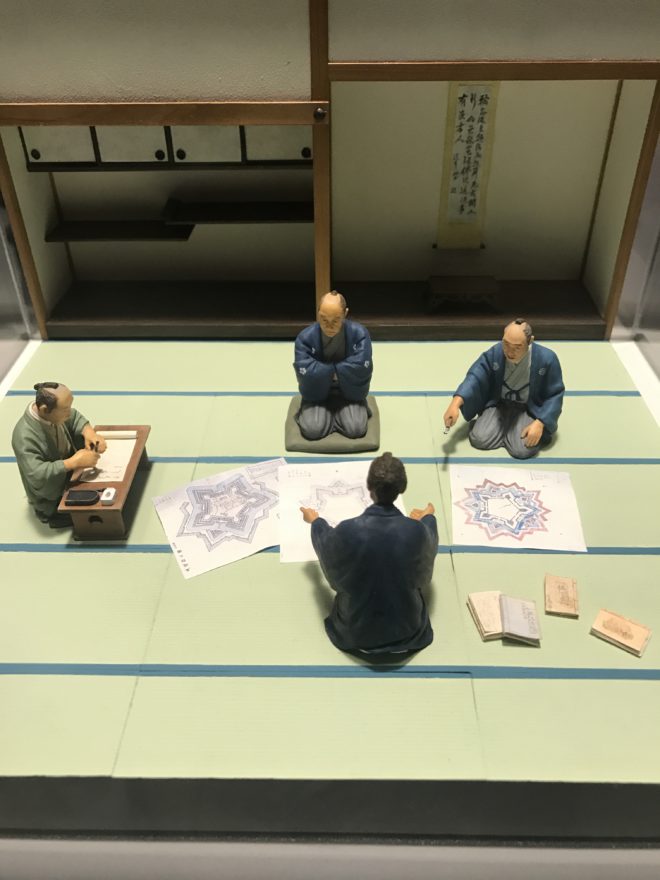
Our next stop was the Mt. Hakodate Ropeway (19-7, Motomachi, Hakodate)—it was from one great height to another. Dubbed “a three-minute trip across the sky,” the cable car does take you from the base station to the summit in 180 seconds. But the snowfall had gotten more intense that by the time we reached the top, we couldn’t see the view. “This is a three-Michelin-star view but we cannot see it,” said Inoue as we all laughed.
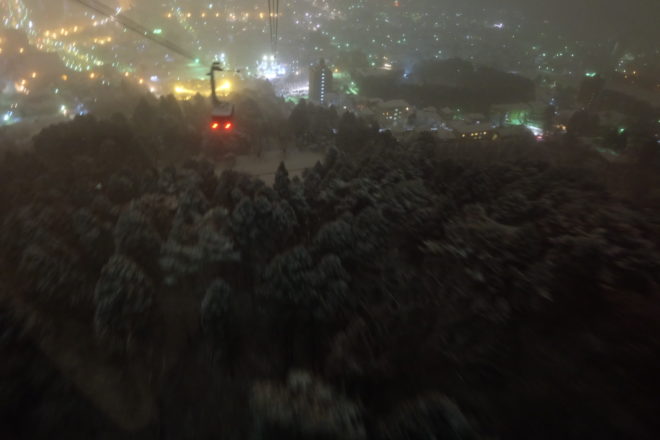
As we headed down the ropeway, I asked myself, “Would I trade all the snow for a great night view?” I got flashbacks of the previous days’ winter adventures: falling over again and again to make snow angels, spotting that fox trail, the trek to the shrine, even slipping on ice like a “Home Alone” robber, and I found myself answering no, I wouldn’t.
Besides, missing out on the view from Mt. Hakodate gives me another reason to come back. Next winter. Or maybe fall.
And yet another reason to come back? The people. During our week in Hakodate, we had been treated with such warmth and kindness by strangers and new friends alike. The man at the Morning Market who threw in an extra piece of scallop with my order. Ken handing me a limited-edition Fuchico from Hokkaido on our last day. The endless list of people who eagerly shared their culture with us.
“Hanggang sa muli,” Yuki said as we waved goodbye at the airport, telling us she learned those words the previous night so she could tell us she’d see us again next time.
We were charmed, just like we were charmed by Hakodate countless times, this lovely, lovely place that’s a happy mix of delightful contrasts: the cold winter weather and the warmth of its people, the Japanese traditions and Western touches, the beauty of nature and comforts of the city.
We’d like to be charmed by it again. Hanggang sa muli, Hakodate.
For more info about touring Hakodate, contact Universal Holidays Inc. at [email protected] or call 8593827, and Adventure International Tours Inc. at [email protected], call 8849491.

